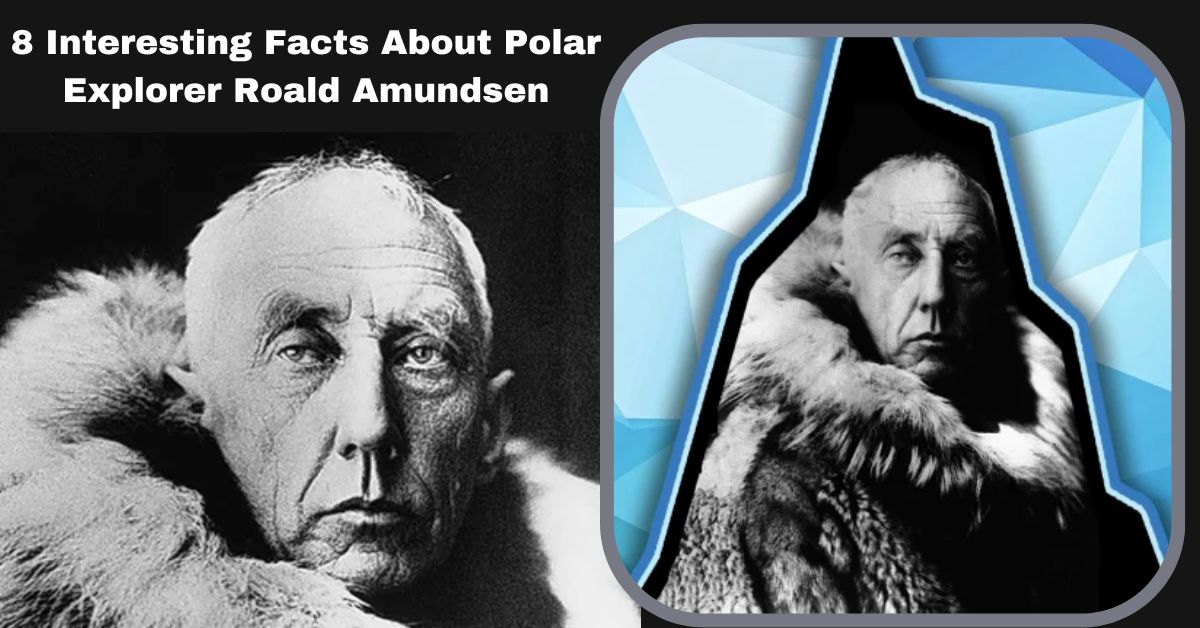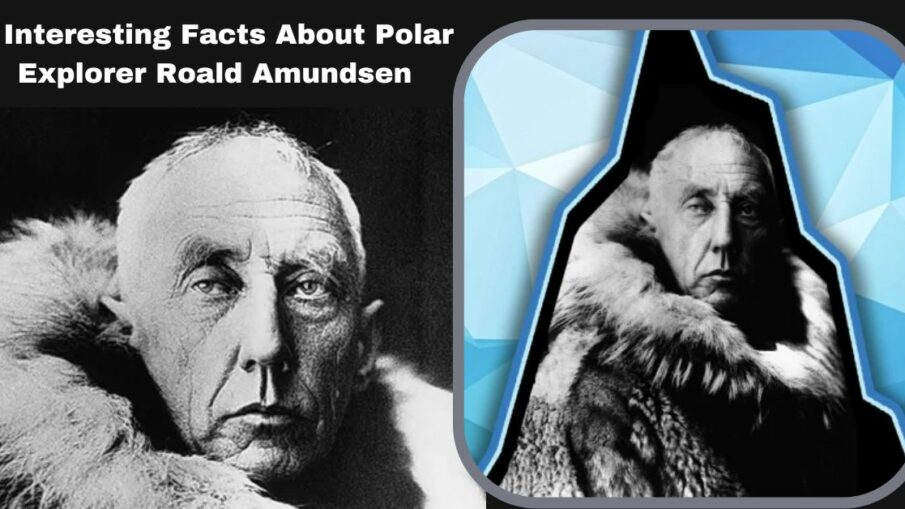Some arctic explorers may boast a significant “first” under their belts. Picking only one Roald Amundsen achievement is challenging. The Norwegian ice titan traveled all around, from the South Pole to, well, the North Pole. Here are eight interesting facts about his legendary career (and its heartbreaking end).
1. Sir John Franklin Inspired Roald Amundsen to Become a Polar Explorer
Roald Amundsen was reared in the adjacent city of Oslo after being born in Borge, Norway, in July 1872. Amundsen’s father passed away when he was 14 years old, and his elder brothers quickly left the house, thus he spent his teenage years living with his mother.
Despite his mother’s desire for him to pursue a career in medicine, Amundsen had been reading Sir John Franklin’s writings since he was 15 years old, the leader of the tragic Franklin expedition, and developed a hidden interest in polar exploration.
The adolescent Amundsen decided to prepare for such hardships by participating in the two activities his village offered—football, often known as soccer, and skiing—and sleeping with the windows open in the winter, “even in the bitterest weather.”
Amundsen pursued his university studies in medicine in accordance with his mother’s desires. She passed away before he had his degree, so he decided to leave school “with enormous relief” and pursue exploration.
2. Amundsen Was on the First Expedition to Overwinter in the Antarctic

Amundsen was given the position of first mate on the Belgica, a Belgian ship sent to explore the Antarctic area, in 1897 when he was 25 years old. From February 1898 to March 1899, the ship was stuck in pack ice for nearly a year, making it the first expedition to ever spend a full winter in the Antarctic.
Scurvy spread rapidly across the team, and some of its members sometimes went insane. It didn’t go well. (Scientist Emil Racoviță made an effort to amuse himself and others by sketching amusing portraits of his colleagues.)
During this lengthy stopover, American surgeon Frederick Cook, who would later become famous for his hotly contested claim of having reached the North Pole first, was especially helpful, forcing the men to consume fresh seal and penguin meat (Amundsen described the latter as “absolutely excellent”) to lessen the effects of scurvy.
And it was Cook who recommended that they make a canal by chopping their way through the ice when they ultimately noticed some open water in the distance in the early months of 1899; it was a laborious, weeks-long endeavor that did eventually pay off. On March 28, 1899, the Belgica arrived in Chile before heading back to Europe.
3. His Mission Was the First to Sail Through the Northwest Passage
Finding a sea passage that connected the Atlantic and Pacific Oceans across the Canadian Arctic has long been the obsession of explorers. Sir John Franklin and his group of 128 men were among the numerous people who died while searching for this so-called Northwest Passage.
Technically, the Northwest Passage was first traveled through by Irish explorer Robert McClure in 1854 (ironically, while on an aborted quest to rescue Benjamin Franklin), although his voyage also included walking on ice.
Amundsen was the first person to really navigate the whole Northwest Passage some fifty years later. He departed from Europe on a 72-foot-long motorized sloop known as the Gja in June 1903 with six other men. They had to travel through the Bering Strait, which took them about three years.
During that time, they spent two years gathering scientific data and learning from Inuit in a bay off King William Island, and another winter waiting for the ice to break up off Herschel Island, which is located close to the current border between the Yukon Territory and Alaska on the Arctic Ocean.
Additionally, below are intriguing facts pertaining to Richard Garriott and Martin Luther King Jr:
- Richard Garriott Facts: A Journey Through Gaming and the Cosmos
- Top Five Surprising Facts About Martin Luther King Jr.
4. The First Expedition to Reach the South Pole
In order to accomplish his next achievement, Amundsen intended to emulate fellow Norwegian explorer Fridtjof Nansen by purposefully allowing his ship to get trapped in pack ice, which would perhaps float him to the North Pole. Even Amundsen’s ship, a small, wooden craft known as the Fram (Norwegian for “forth”), was permitted by Nansen.
However, Amundsen was unaware that two explorers—his old friend Frederick Cook and another American called Robert Peary—had independently claimed to be the first man to reach the North Pole in September 1909, only days before the expedition.
Knowing that his financial situation would improve if he accomplished another “first,” Amundsen decided to focus on the South Pole, which had not yet been reached, without telling the majority of his crew or anybody in Norway, least of all Nansen, whose ship he had leased.
5. Amundsen Tried and Failed to Tame a Polar Bear
Amundsen successfully navigated his ship Maud through the Northeast Passage, a waterway that connects the Atlantic to the Pacific Ocean by means of northern Eurasia, in the late 1910s and early 1920s.
Amundsen had carbon monoxide poisoning, a fractured arm, and a near escape from a polar bear assault while his arm was still recovering. Marie was taxidermized by Amundsen, and she is now on exhibit in the study of his residence in Uranienborg, Norway.
6. He Had Two Indigenous Foster Daughters
Amundsen and his team spent a lot of time with the Chukchi, a group of indigenous Siberians, during their journey through the Northeast Passage. Some Chukchi people, like Kakot, a widower who traveled with his ill 4-year-old daughter Kakonita (Nita), served on Amundsen’s ship. But in the end, Amundsen was a very spectacular failure as a parent.
7. The First North Pole Flight Included Him
Midway through the 1920s, Amundsen shifted his focus from the arctic waters to the sky above them. He was a member of the crew who flew to the furthest northest point ever (87°44′ North) in 1925, breaking a previous record. His most renowned flight, in a dirigible dubbed the Norge the next year, would be a seaplane.
Amundsen and more than a dozen other men left Svalbard on the Norge on May 11, 1926. They included Umberto Nobile, an Italian aviator who served as the Norge’s engineer and pilot, as well as Oscar Wisting, an important participant in Amundsen’s expeditions on the Maud and the Fram. They successfully completed their mission to cross the Arctic Ocean when they arrived at Teller, Alaska, three days later.
8. Amundsen Disappeared in 1928
Amundsen led a search effort to find Nobile’s lost airship Italia across the Arctic Ocean in the late spring of 1928. On June 18, he and a few other soldiers left Troms, Norway, on the Latham 47.02, a prototype French seaplane. They vanished without a trace.
A damaged float from the Latham was discovered on August 31 by a fishing boat north of Troms; further wreckage was discovered around the Norwegian coast in the months that followed. There are several theories regarding what happened to the rescuers.
The most amusing (but least likely) one is that Ellsworth saved Amundsen, who spent the rest of his life in Mexico living under the radar. The most probable scenario is that an accident occurred, and everyone on board died.
Hope you like it. Stay tuned with us on Thegeofacts.com for more amazing updates.


Leave a Reply